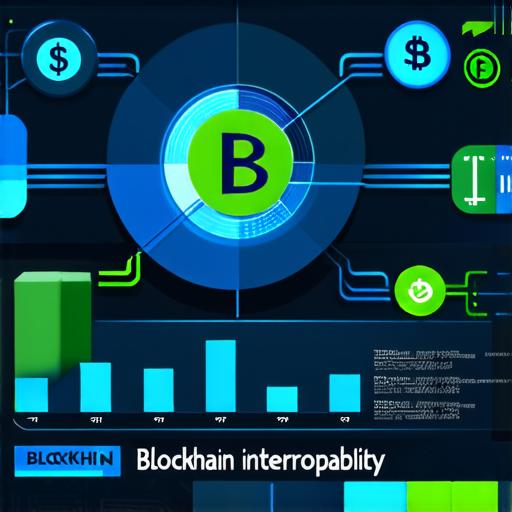What is blockchain and how can it affect interoperability
Blockchain technology has been at the forefront of innovation for the past decade, with its ability to provide secure, transparent, and decentralized solutions to a wide range of problems. One area where blockchain shows significant potential is interoperability – the ability of different systems, networks, and applications to communicate and exchange data seamlessly.
What is Blockchain?
Blockchain is a distributed ledger technology that allows for secure and transparent record-keeping without intermediaries. It consists of a chain of blocks that contain encrypted information about transactions, which are validated by a network of nodes or participants. Once verified, the block is added to the chain, creating an immutable and tamper-proof record of the transaction.
Blockchain technology has its roots in cryptocurrencies like Bitcoin, but its potential applications go far beyond finance. It can be used for supply chain management, identity verification, voting systems, and more. The key feature that sets blockchain apart from other databases is its decentralized nature – the information is stored across a network of nodes, rather than in a central database controlled by a single entity.
Interoperability and Blockchain
Interoperability refers to the ability of different systems, networks, and applications to communicate and exchange data seamlessly. In today’s world, interoperability is often hindered by proprietary standards, siloed systems, and lack of standardization. This can result in fragmentation, inefficiencies, and missed opportunities.
Blockchain technology has the potential to overcome these challenges by providing a decentralized and standardized solution. With blockchain, information is stored in a secure and transparent manner, and transactions are validated by a network of nodes, rather than a central authority. This eliminates the need for intermediaries and creates a trustless environment where data can be exchanged freely and securely.
Challenges of Blockchain and Interoperability
While blockchain technology holds great promise for improving interoperability, it also presents several challenges that need to be addressed. One of the main challenges is scalability – blockchain networks can become slow and congested when dealing with large volumes of transactions. This can result in longer processing times and higher fees, which can deter users from adopting the technology.
Another challenge is interoperability between different blockchain networks. Currently, there are several blockchain platforms, each with its own standards and protocols. This can make it difficult for applications to communicate and exchange data across different networks. To overcome this challenge, standardization efforts are underway, such as the creation of the Blockchain Interoperability Protocol (BIP) by the Bitcoin community.
Security is also a major concern with blockchain technology. While blockchain is generally considered secure, there have been instances where attacks have targeted the network, resulting in the theft of funds or other assets. It’s important for users to understand the risks involved and take appropriate measures to protect their data and assets.
Case Studies and Personal Experiences
To better understand how blockchain technology can improve interoperability, let’s look at some real-life examples:
1. Trade Finance on Blockchain
Trade finance is a complex and often inefficient process that involves multiple parties and intermediaries. By using a blockchain-based platform, trade finance transactions can be streamlined and made more transparent, reducing the time and costs involved.
2. Identity Verification on Blockchain
Identity verification is a critical process in many industries, such as finance, healthcare, and e-commerce. However, current identity verification systems are often fragmented and prone to errors. By using a blockchain-based platform, identity verification can be made more secure, efficient, and standardized.
Personal Experiences

As a blockchain developer, I have seen firsthand how blockchain technology can improve interoperability. For example, I worked on a project for a healthcare provider that involved integrating patient data from multiple sources onto a blockchain-based platform. This allowed doctors and healthcare providers to access up-to-date and accurate information about their patients, resulting in better care outcomes.
FAQs
Another personal experience was working on a trade finance project for a multinational corporation. By using a blockchain-based platform, we were able to streamline the trade finance process and reduce the time and costs involved.
Conclusion: The Potential of Blockchain for Interoperability
Blockchain technology holds great promise for improving interoperability across various industries. While there are challenges to overcome, the potential benefits far outweigh the risks. By providing a decentralized and standardized solution, blockchain can enable organizations to share data securely and efficiently, resulting in improved collaboration, reduced costs, and enhanced security. As a blockchain developer, I am excited to see how this technology continues to evolve and transform the way we interact with each other and conduct business.



